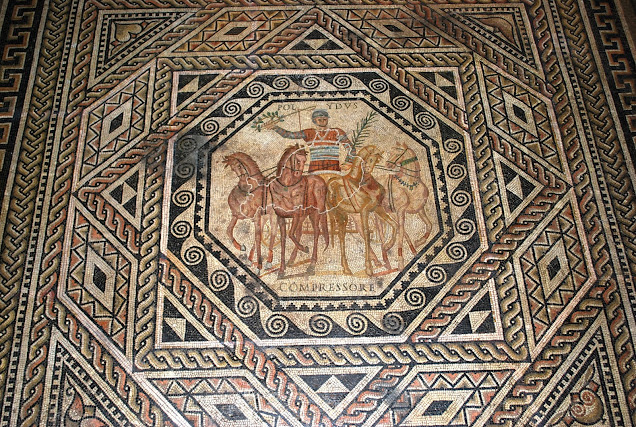Ancient Sparta
29 October 2017, I visited the theatre of Sparta. It is situated at the southern slope of the Acropolis Hill and was constructed around 30 to 20 BC, and closely connected with the hegemony of Gaius Julius Eurykles, a close friend of Octavian (Emperor Augustus). The Spartan theatre is unique on account of its size and the quality of its construction, evident from the use of local white marble
Although we didn't find any remains of an earlier classical theater, the existence of such a theater at the city of Sparta since the 5th century BC is testified by ancient authors. It is closely connected with the celebration of religious ceremonies such as Gymnopaediai. Maybe the ancient building was located at the same position as the current Roman one, but that's unclear.
The Roman theater had ten staircases and nine bleachers, while the upper part (the ephitheatron) had seventeen staircases with sixteen bleachers. It is suggested that the construction of a second ephitheatron was planned. In the lower part of the seating area (cavea) there was a series of multiple seated benches with backrests, the proedria.
Archeologists discovered a noteworthy feature: a moveable wooden skene. This could be moved on wheels along a triple corridor and was stored in a building by the west side entrance (parados), the skenotheke. It suggested the need for the existence of free space, probably because the theater was a place for public gatherings and of religieus ceremonies and rituals.
When sitting in the cavea of 141 meter in diameter, you can imagine it was one of the biggest theatres in Peloponnesse. It could host 17,000 spectators!
The theater had a large scene building (skene), an acting area (proskenion) and a U-shaped orchestra. For the formation of the two edges of the theater, two huge retaining walls were built, which was a great technical achievement.
By the end of the 1st century AD the theater was furnished with a monumental marble skene of the Corinthian order, the erection of which was funded by Emperor Vespasian. The marble facade or the retaining wall of the east parodos, a catalogue of Spartan officials and 'cursus honorum' are recorded. Quite impressive!
More pictures of the theater of Sparta and its museum can be found here!






